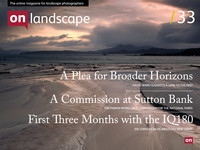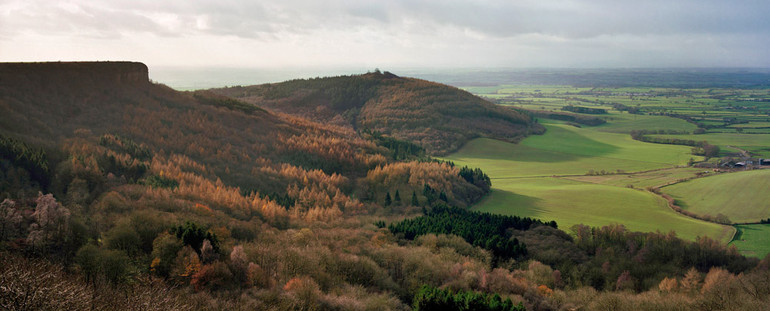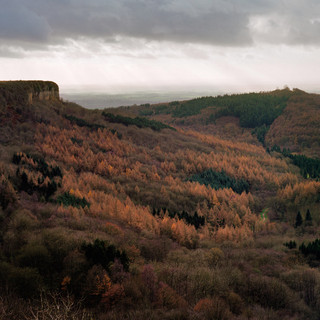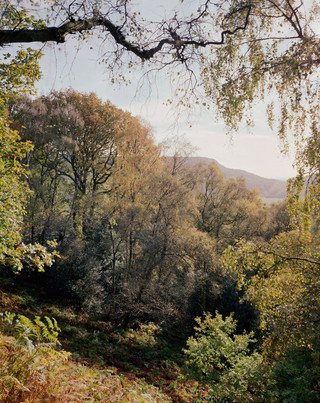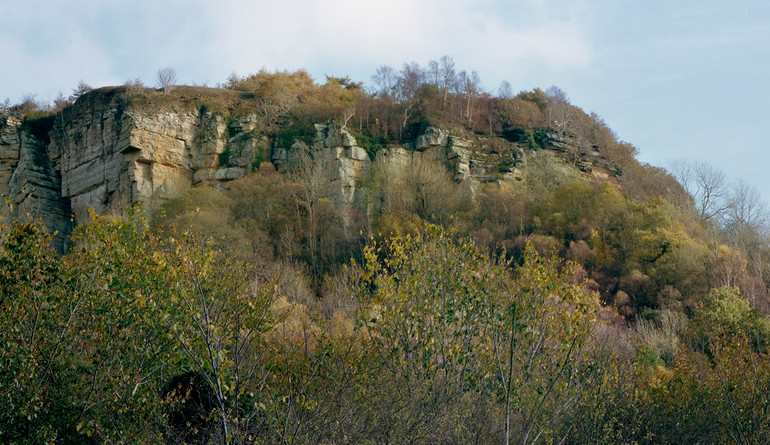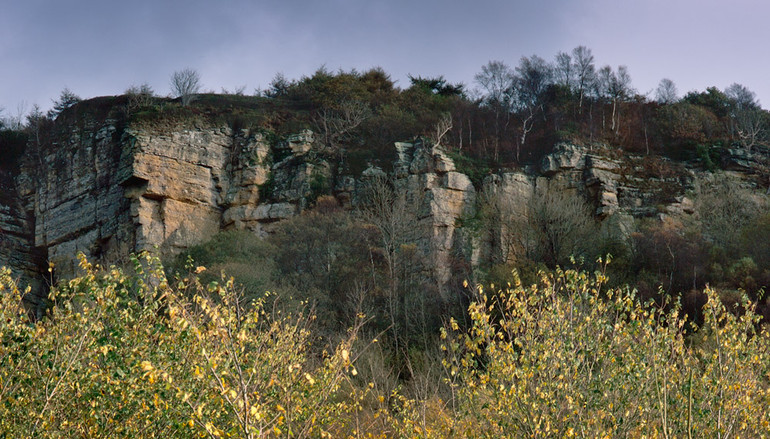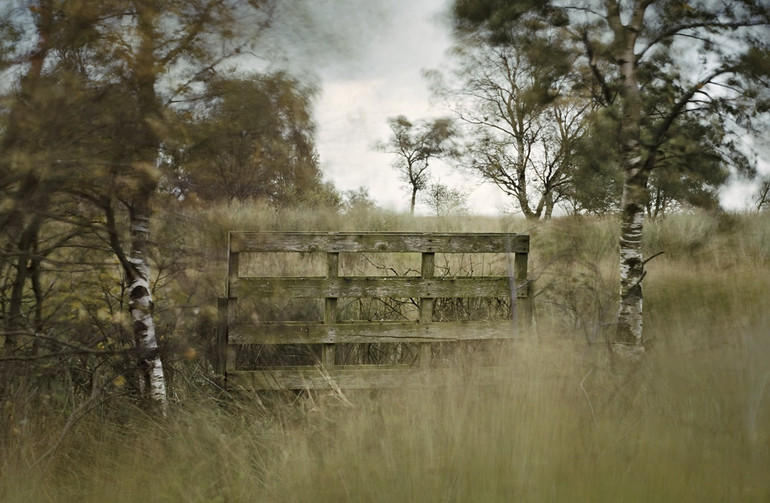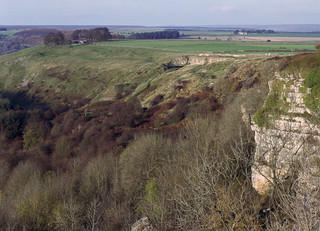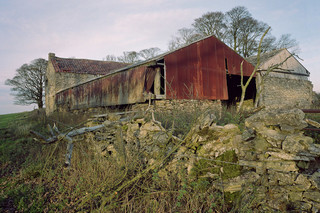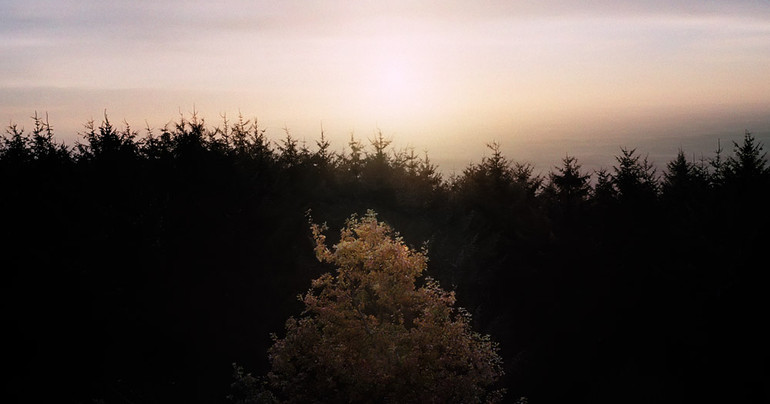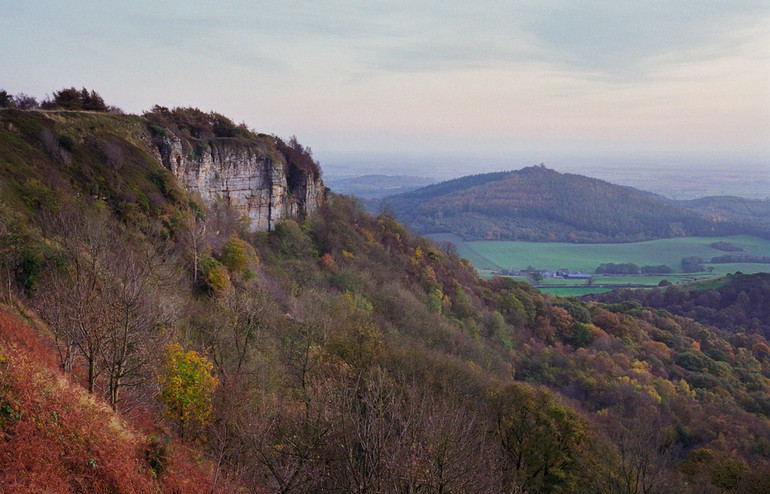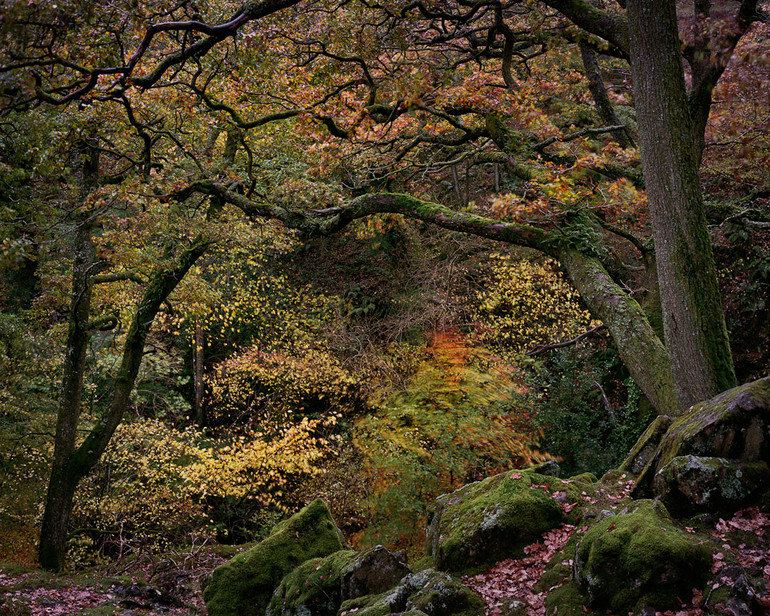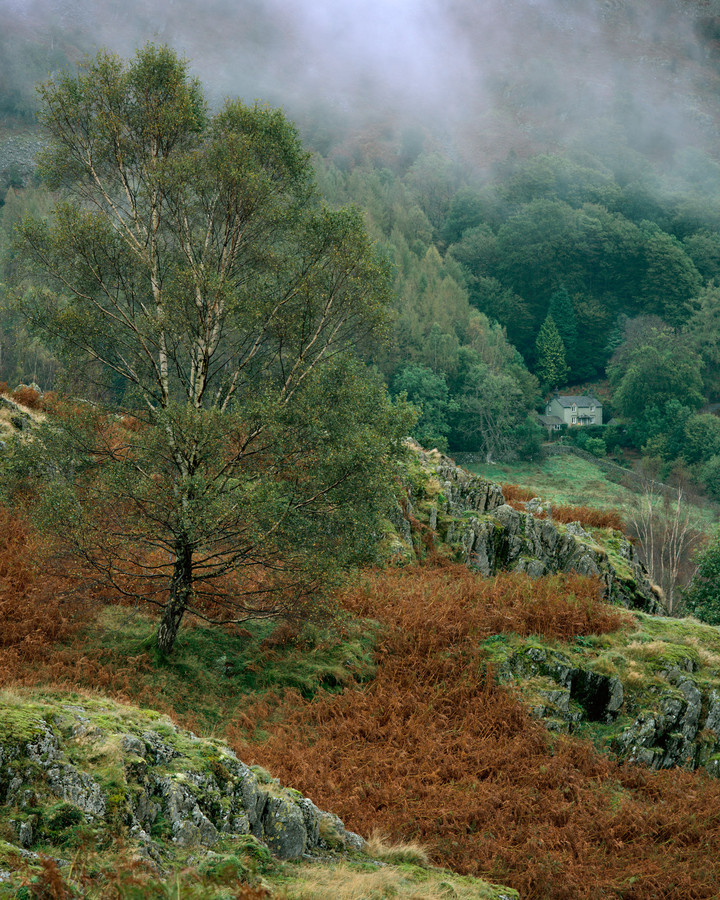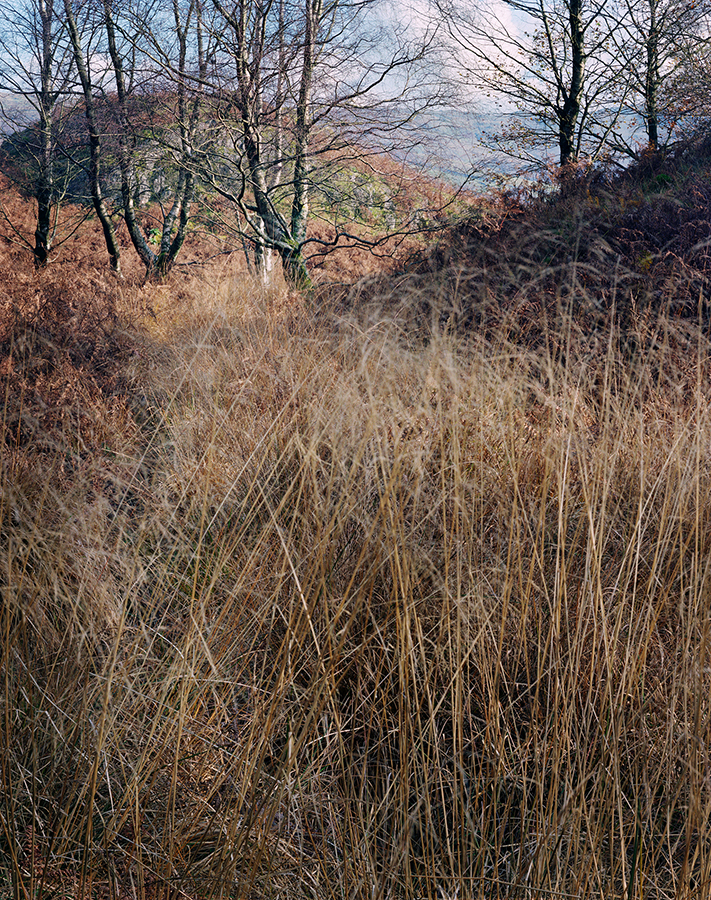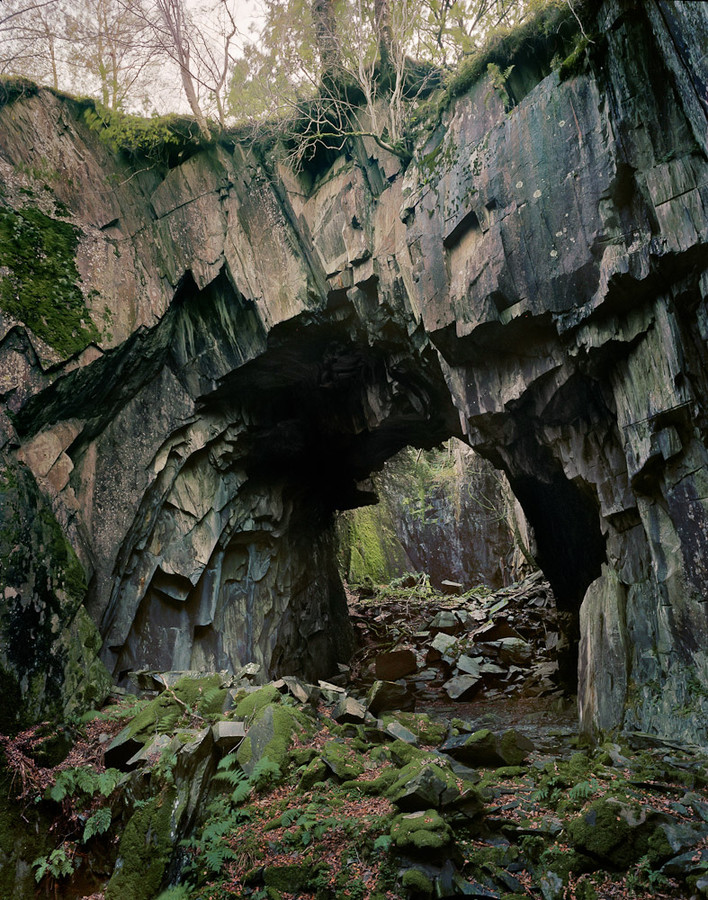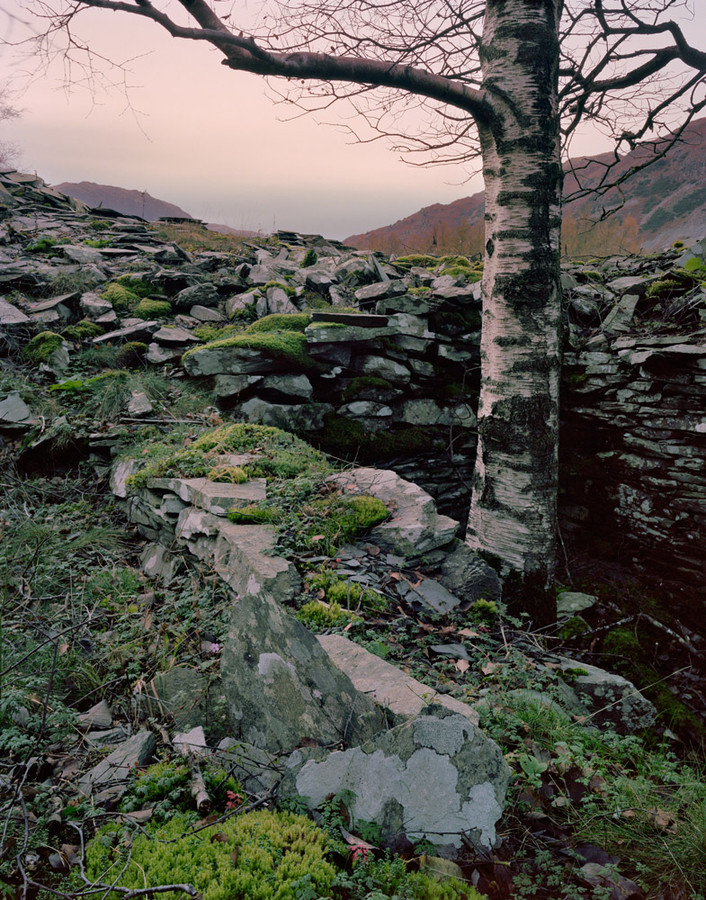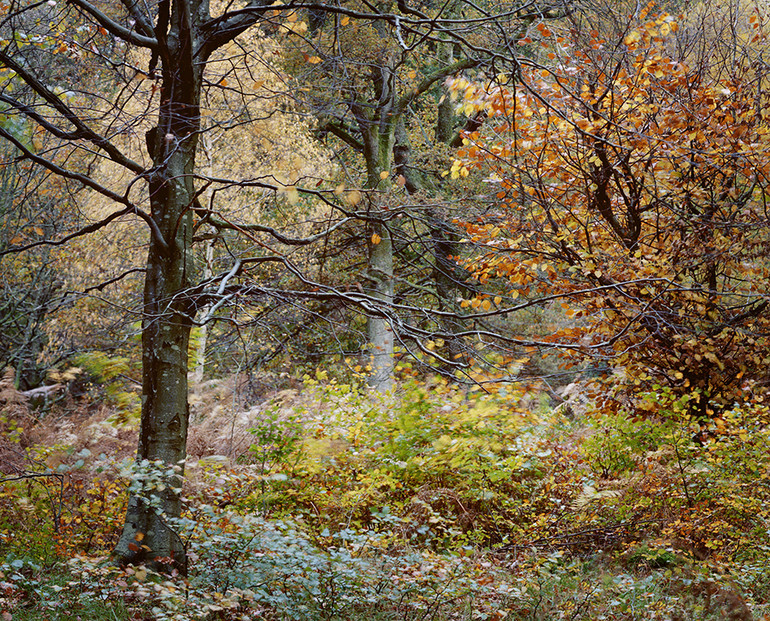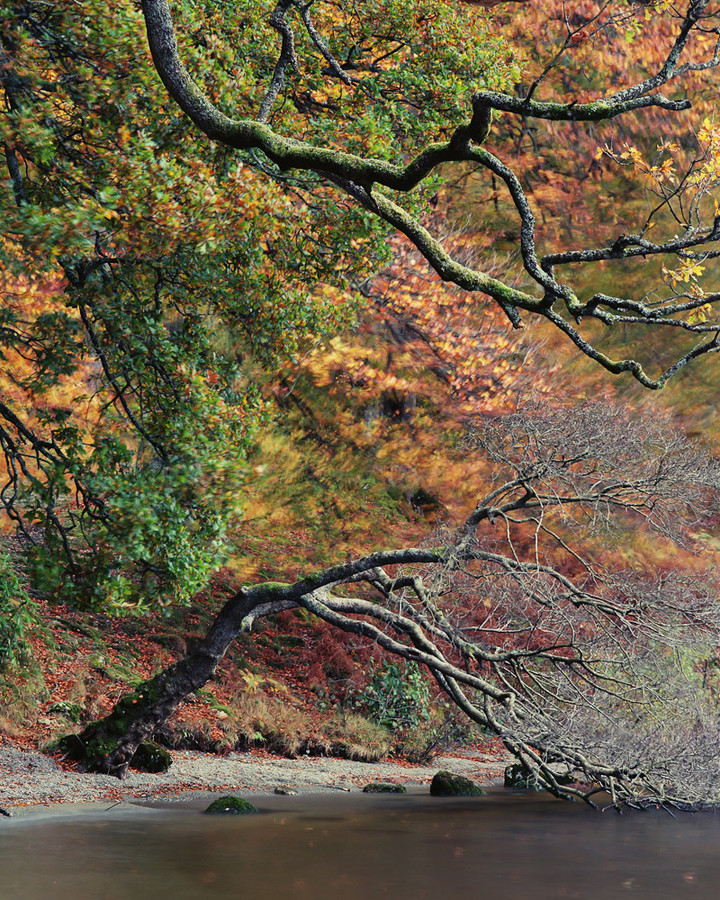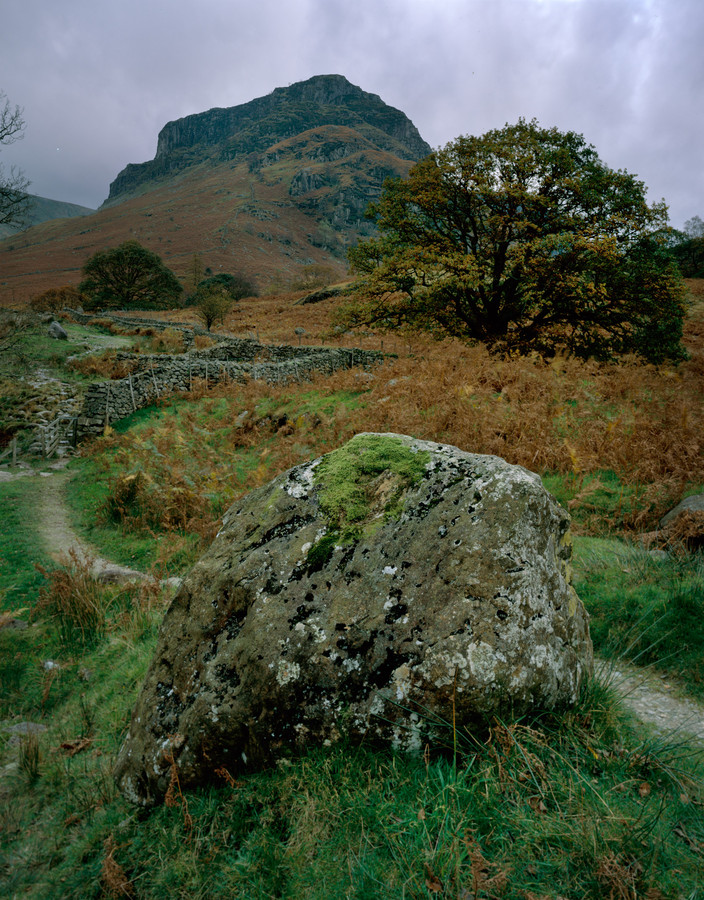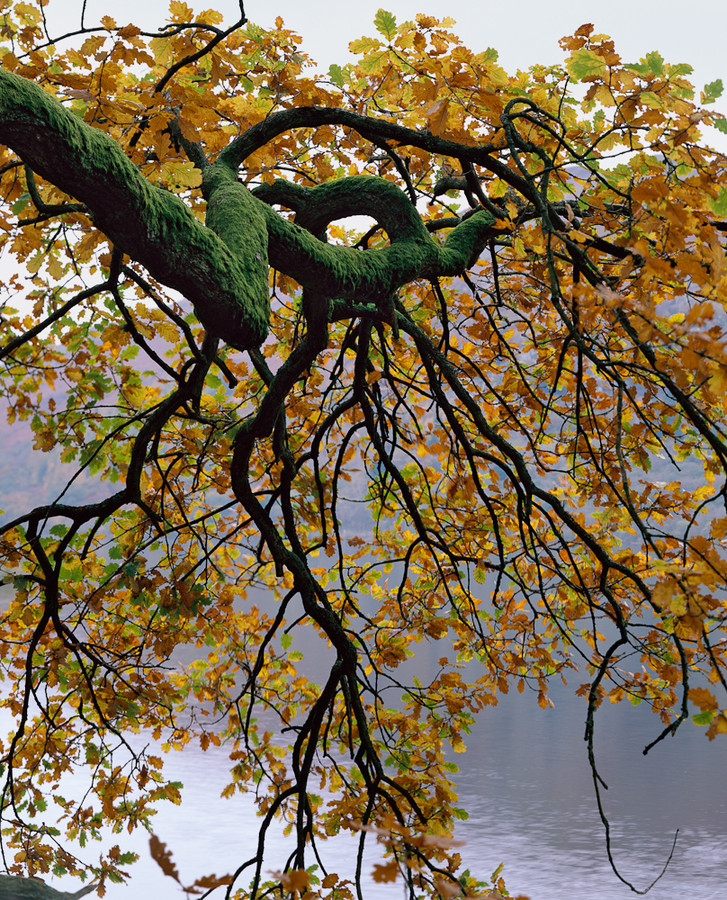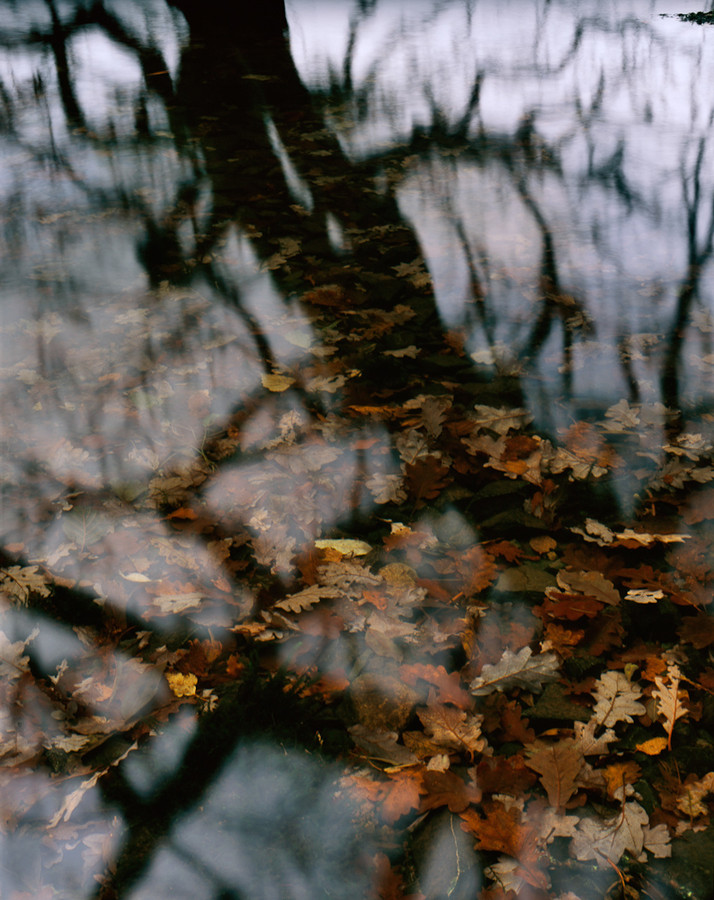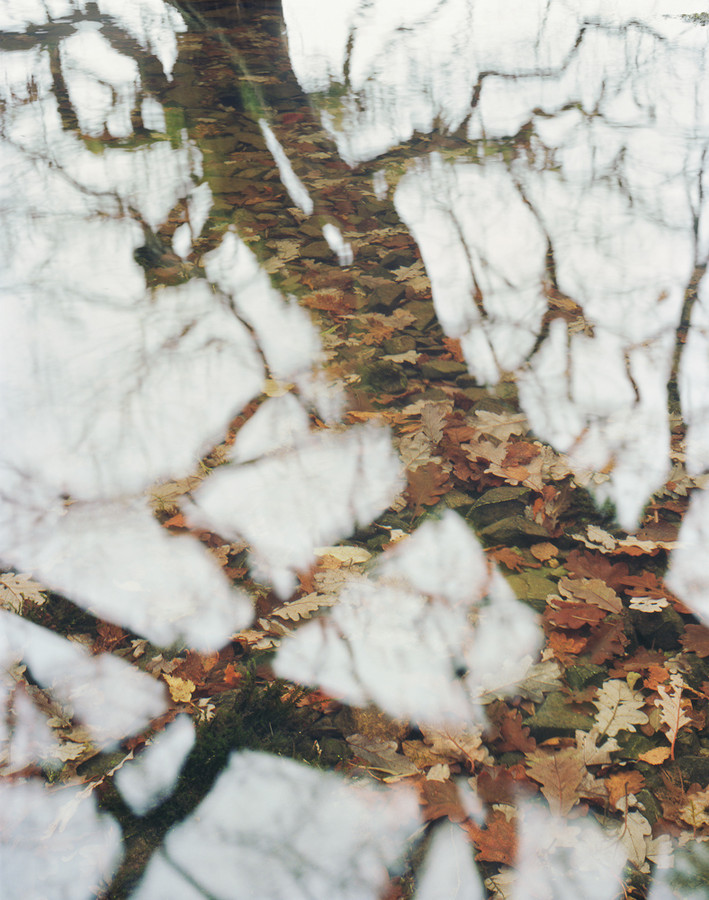Trip report

Tim Parkin
Amateur Photographer who plays with big cameras and film when in between digital photographs.
Like many photographers, my family holidays and my photography trips blend into one, limited only by the patience and tolerance of my wife. Ever since I began to have an interest in photography, we have been spending time in Glencoe with the occasional day trip further afield. In 2008 we changed this and spent a fortnight in Kintyre and last year we had a short break in the Lake District as we were launching this very magazine. So it was with great pleasure that we returned to Glencoe again in October 2011, booking into the Clachaig Inn; one of the log cabins around the back with a view over Stob Coire Nam Beith.
Sutton Bank
Let’s backtrack a bit though - for the last year I’ve been doing very little photography, running the magazine and supporting its income with my ‘other jobs’ (scanning film, large group photography and web development) has been very demanding. The two trips I had made were to the Lake District with a group of excellent photographers in January (group photo pool on flickr here and also the Castle Crag location guide here) and a trip to Ardnamurchan with Dav Thomas (documented here). I did manage a day trip out with Paul Moon and also a couple of shoots in the Peak District and Bamburgh but it was really quite a poor year for photography up until October.
October did get a bit silly though. It started when I was commissioned to produce a set of photographs for the new Sutton Bank visitor centre in September which preceded a workshop in October where myself and Dav Thomas teaching large format to a group in the Lake District. From here I would have to head straight off to Glencoe after a few hours to pack. As it turned out, I ended up with nearly three, back-to-back weeks of photography (if we are allowed to include the family holiday in this count). This trip guide will hopefully summarise the whole of this.
To begin with, the first day of this trip report had had me trying to get a set a final of photographs for the Sutton Bank visitor centre - I had been putting this off later and later as the autumn colour was so slow this year. I couldn’t delay any further though as the following three weeks were workshops and holiday.
The brief for the job was fairly loose but they had wanted something a little less ‘picture postcard’ and had expressed an interest in a few of the images that I had taken with negative film (they had found me whilst browsing websites of Yorkshire based photographers). They also didn’t necessarily want images taken in beautiful weather conditions; the goal was to create images that a typical visitor to the park could relate to and would be expected to see.
So, for the last trip of this commission, I packed a full large format kit - Ebony 45SU and five lenses - and also packed medium format camera - Mamiya 7 and three lenses - plus 2 liters of water and a Panasonic LX5. Suffice it to say that everything was a little heavy. I also packed my 8x10 camera, a Toyo 810MII fondly referred to as ‘Black Betty’ due to the sense of awe she instills all who look upon her (well, OK, it might be a sense of “what the hell are you doing with that thing” or, as a colleague was once asked when he was deploying his similar camera “Is that a barbeque?”!). Black Betty wasn't going for the walk with me (although with two tripods underneath her she doesn't look like she's ready for it), she was only deployed for a couple of morning shots of the wider view with the potential of a very large print for the walls of the centre - possibly 8m x 3m.
Fighting with the 8x10 camera can be a little frustrating at times, using two tripods and a dark cloth big enough to sail the Fastnet can be unwieldy to say the least - however, there is something magical about seeing the scene projected onto such a large surface. The picture is the goal with any camera though and so I was hoping that the slight frost would add some tonal highlights to the winter greens and the early morning sun would gently colour the sky..
The second shot was taken a couple of days after returning from the Scotland trip, a stitch of two 4x5 shots side by side. I loved the way the larches glowed and the light was breaking through the passing rain clouds. I have always thought that panoramas are one of the hardest of formats to create pleasing compositions in. Very often they seem to solicit a technique that shouts ‘Never mind the quality, feel the width!’ but when they are created with care they can suggest more than just a side to side sweep of the eye. I’m far from an acolyte in this medium, never mind a master, but I really enjoy them when done well - a recent purchase of a 617 camera from Joe Cornish may be the push I need to try something more creative in this format.
The square aspect ratio on the other hand offers the photography more flexibility in terms of composition. Despite the potential need to produce panoramic images for the commission, I also took the opportunity to take a couple more personal images and so I waited for the rain clouds to close the top of the composition I was looking for and even though I was using Portra 160 negative film, I still used a 2 stop soft graduated filter to bring the weight of the sky down a little (the film can cope with the highlights but can get grainy if you try to darken a sky that was taken without a grad too much).
The big mistake I had made in planning the remainder of the day after taking the initial picture was that my ‘goals’ just happened to be scattered across the full length of the park - realising this, I started the day with quite a ‘pace’ and as I made my way down into Garbutt Wood, stopping on the way to take a picture of Roulston Scar as listed in the brief (well OK - a little bit of artistic license here).
One of my goals was to get photographs of Whitestone cliff but with so many other pictures of this location, I knew I would have to do something a little different to give the park some original imagery. Taking a photograph from below the cliff was a possibility but trying to find somewhere to do this without trees getting in the way was difficult. In the end, after much thrashing through bracken, I found a rock perched on a small prominence that allowed to me see the whole of the cliff edge. The only issue was trying to see the ground glass on my camera once it was all mounted on the tripod. After a good fifteen minutes of tiptoeing and stretching I managed to get a position to take a shot. My first shot was taken as the sun was being diffused by the edge of a cloud - a technique I often use to soften the contrast in a picture without losing direction light.
However, as I was about to pack up I glimpsed a dark cloud through the trees behind me, where the wind was coming from. I thought I’d wait a few minutes to see what it would bring. 15 minutes later and a dark cloud had crossed over where I was and then sat behind the cliff just as sunlight came out to pick out the trees in the foreground and the edge of the cliff.
The next six hours passed in a bit of a blur, up and down the cliff to capture images of the grassy fields at the top of the cliff and back down again to try, unsuccessfully to make something of the cleared forest areas. I was quite happy with a shot of a lonely fence who'd lost all his fency friends though - made a little more interesting by removing the magenta/green saturation (trying to give it an 'aged' look - sort of - OK, I got the developing wrong and it was the only way I could fix things - However nice it would be to have people think I was being creative, I'm useless at lying).
Finally it was one last thing on my checklist - High Barn. This must be an important barn though as it was featured high on my list of goals. Checking the map at this point was a bit disheartening.. I had another two miles to walk, back up the cliff and then three miles to get back to the van again and I was already feeling a little whacked. Sometime later, cursing the decision to carry so much gear, I saw my first sight of the fabled barn in the distance.
Sadly, there was still someway to go and about half an hour later I was approaching the barn and my imagination had been working it up into being some sort of gothic splendour - a barn that bales of hay dream about. Sadly it was not to be so - to the stupefied sounds of a photographer shouting "is this it!?" bags hit the ground and I though "what am I going to do with this". Well, at this point in time the answer was probably 'not much' as I had 30 minutes until sunset. To add insult to injury, the barn was fenced off with barbed wire so I couldn't get any other angle apart from by the path. So be it..
And now the walk back which, after checking the map, worked out at about an hour and a half hours - for a fit man with no rucksack. For a beleaguered photographer with a bad back and half his camera collection in his rucksack, who knows how long. Even more annoying was the fact that the evening light was wonderful. At one point I found myself persistently swearing at it, accusing it of "taking the michael" I seem to remember - passers by were giving me the odd look - perhaps I was slightly delusional at this point. It got so bad as I was walking past a stand of fir trees that I swear the yellow tree below was shouting "ME! ME! TAKE A PICTURE!!". Of course I couldn't ignore a talking, jumping tree so here's the result.
As the sun finally set, I pulled out my head torch - or would have had I got one with me - doh! Ah well - how dark could it get in an hour? ... one hour later ... Ouch! Bloody tree ... hmm, is that the cliff?
Well, OK, it wasn't quite that bad but when you got inside the woods it went dark enough to not see where your feet were. It never ceases to amaze me how our eyes adapt to the light once the sun goes down. The first surprise is always that it seems to get lighter once the sun drops - I've been told by a couple of people that they've actually measured this but I still think it's just that your eyes adjust to the brightest thing in the sky, which is normally the sun as it's above the horizon. Once the sun has dropped, your eyes start to acclimatise to the sky brightness. This is normally enough to see to walk by for a good half an hour and even after that, you can usually just about make out the outlines of objects for another half hour maybe (assuming no moonlight).
Even after half an hour I was still able to take a final twilight shot although we were getting into 60+ second exposures now. Fortunately all was still and so clouds kept their definition.
So - back home at 8pm, pack the equipment again and Dav Thomas and I are off to the Lakes to put on a large format workshop.
Lake District
Dav and I have been putting on the occasional workshop for the last couple and have wanted to run a longer workshop for some time. We were fortunate to find a beautiful location just near Ullswater to hold our workshop and had six great participants that we knew or who had come on previous workshops. The goal of the workshop was a combination of enabling people to work with large format cameras and film and also to give people guidance on composition and finding the picture. We met up with our clients on a rainy day at Aira Force and spent a few hours looking around the site. Aira Force's main attraction is the waterfall but as photographers, the shape of the land arranged around the gorge and the trees make an autumnal visit a beautiful occasion. I was talking to our guests and at one point was working with Joe Wright on a composition which I've included below.
I used the trees as a pseudo frame for the picture, an arch over the whole image. The colours in the tree in the centre were wonderful but the light was too low for a short exposure and so there was more movement than I would have liked in the picture.
We spent the remainder of the travelling to a few locations within the lakes, firstly to White Moss about Rydal where I had taken this shot on a previous scouting session that myself and Dav Thomas had made. White Moss is a beautiful location that I can heartily recomend with a view over both Rydal and Grasmere and a wonderful selection of white birch, bracken backed by the coffin run.
Later in the day, Dav Thomas took a great picture looking in the other direction here ..
.. and then onto a location that our colleague David Unsworth had introduced us to called 'Black Hole' as shown below.
The light had fallen when I took this shot and so I ended up exposing the film for seven minutes - during this time Dav and David wandered around the other side of the cavern, in the photograph throughout my exposure. However, no trace of them can be seen in this image, even though they were standing still quite often. The sad thing about this location is that to my left is a large, deeper hole and at the top of the cliff to the left is the end of a road - the result is an impromptu local tipping point. It's sad to see somewhere so dramatic and beautiful ruined by rusting washing machines, old nappies and car parts. It's often difficult to understand that people local to the area don't see the beauty all around them. About 50 yards outside of the cave entrance I took a second shot that had an even longer exposure. This picture was used as an example of extreme tilts, complex bellows factor calculation (the bellows factor is affected by the length from the lens to the sensor - when you tilt you get a longer length for close subjects than for subjects further away - hence the close area needs more exposure. This is equally true of 35mm tilt shift lenses). By the end of this, we could hardly see to get back to the van.
The following day and we managed to talk our clients into a morning shoot, with the possibility of a mist over Ullswater. Somehow I had the feeling that our clients weren't natural morning people, the conversation was pretty one sided although the occasional grunts were heard from the back of the van. We decided to keep it local and so stopped at Mossdale Bay, just North of Glenridding. Typically the light wasn't spectacular but the autumnal colours were beautiful. We had been trying to get pictures of the sunrise across the lake but most of the good photographs produced made the most of the autumnal colour such as this by Dav Thomas
After helping a few of the clients, I sat down on the beach for a moment and as I looked around I saw the 'bowing' tree that seemed a little cliched earlier become mirrored by branches hanging down from above. Whilst I was waiting for clients to regroup, I thought a photograph was worth taking. It was a little windy though and I realised I would have to wait for this to die down in order to get the photograph. This took some time and I was about to give up when I realised the wind was coming in waves and if I could time things right I could get movement in the background trees but could keep the foreground branches still. The result? below...
Later that day we drove over to Stonethwaite in Borrowdale where we met up with David Unsworth who had offered to help our clients if they wanted it. The area, just below Eagle Crag, is beautiful but I was a little tired at this point and potentially coming down with a cold - which probably explains why, when Dav asked a client where I was, he said "Oh Tim's just fallen asleep in a field over there!" Customer service - always our primary consideration! I was actually in the middle of taking a picture when I fell asleep - which just goes to show how exciting large format photography really is!
We spent the following day photographing in the garden of our accommodation. Or rather our clients did whilst we developed film from our days out and then talked to our clients through the scanning process. Joe Wright even managed to take a picture in the garden, have it developed and scanned an hour later and then retook the shot a few minutes later. This is the shot.
After a splendid evening chatting with David & Angie Unsworth we started the final day below Hallin Fell in Hallinhag Wood (cool name!) where we helped our clients for the first couple of hours but were then told to go and take some photographs. One of the things I like to do when I'm working at a location is to try to work out just what it is about where I am that I find unique - it isn't that I will be blinkered about that subject but it helps guide me to areas that might give me something that evokes that location. My first impression was the beautiful oak trees hanging over the water. My first shot was a drawn directly from this and although I like it, it doesn't say anything beyond this.
As soon as I walked to the edge of the lake, I noticed that the oak leaves had fallen into the water and were forming a layer just below the surface. I looked around for something to cast shadows or to shade the light from the sky to allow me to create shapes across the water, areas where shadow would allow you to see through the surface of the water and where the reflection of the sky would block these. This was inspired by a couple of photographs I had taken in Ardnamurchan earlier in the year (the two green feet). I played around with using a polariser at first but was surprised to find that I could only block an 'area' of reflection using the polariser, this made sense when you think how a wide angle lens and a polariser cause unevenness in the darkening of a blue sky; in this case the unevenness was in the reflection from the surface. I did try a shot using the polariser but it was the last picture shown that worked the best. This was shot on negative film and I loved the way that the oak leaves don't look like they are underwater and the reflection looks like a double exposure of some sort.
All in all things had worked out quite well so far and the following day I was driving to Scotland for a ten day holiday with my wife - more on that next week..

